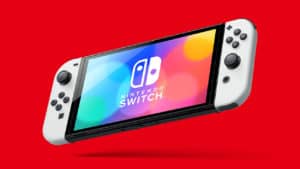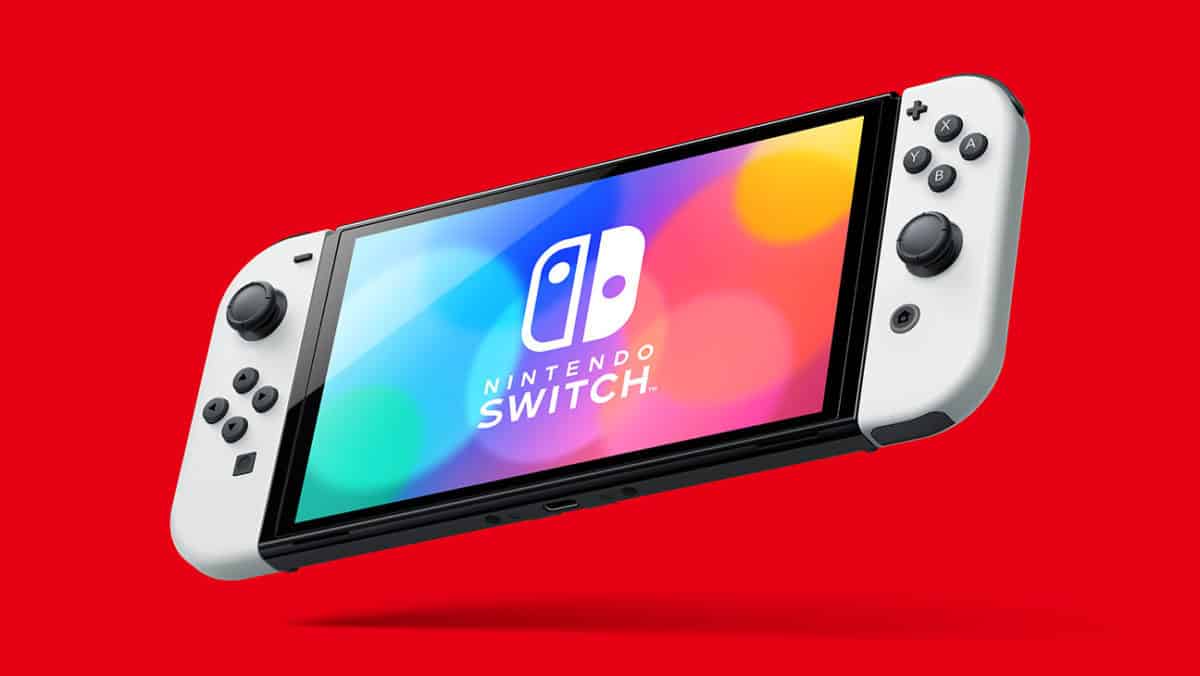
Nintendo Switch OLED
Screen
7-inch 1280 x 720p OLED multi-touch capacitive screen
Networking
Ethernet Port (Docked only) & WiFi (IEEE 802.11 a/b/g/n/ac compliant)
Joy-Con Revision
Decreased chance of Joy-Con Drift
Worth picking up, or should you stick with your old Switch?
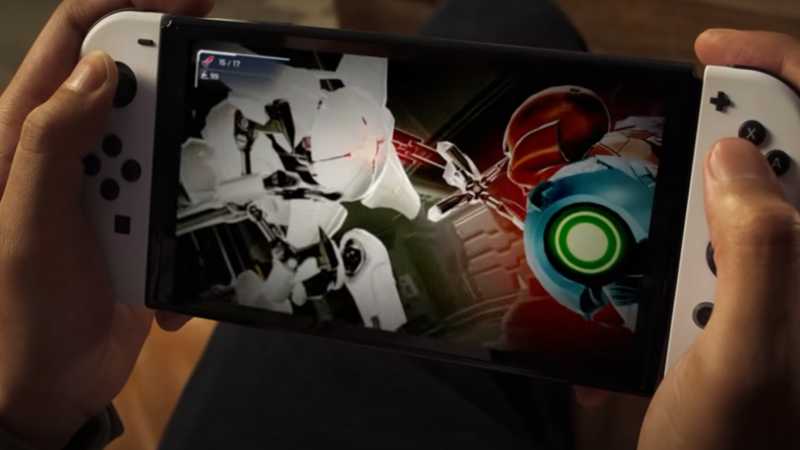
WePC is reader-supported. When you buy through links on our site, we may earn an affiliate commission. Prices subject to change. Learn more
The Nintendo Switch OLED is the third hardware variation of the popular Nintendo Switch family of consoles that made its market debut in 2017.
We’ve had some extensive time with the OLED console, so now we’re ready to answer the question — is the Nintendo Switch OLED a necessary upgrade, just a nice thing to have, or a rare mistake from the Kyoto-based Nintendo?
There are two colors available, “White” and “Neon”. The White Nintendo Switch OLED also comes with a white dock. If you want the classic grey colored dock, then get the Neon, which still uses the iconic red and blue Joy-Con design.
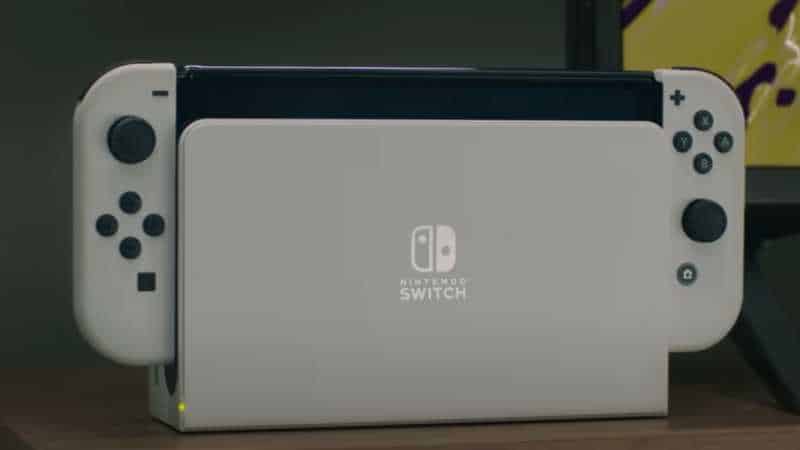
Nintendo Switch OLED arrives in a compact red box, but inside of it is everything you’ll need for a full on Nintendo Switch experience. Each item in the box is nicely protected with plastic, bubble wrap and thin sheets of protective foam, despite being encased in the finest jiggle-proof cardboard.
When you buy a Nintendo Switch OLED, you should receive the following in the box:
If you’ve set up a Nintendo Switch, then you’ll find the experience of setting up a Nintendo Switch OLED to be very familiar. If not, then we’ll guide you through the process quickly, as it’s like setting up most other consoles once you get past the first bit.
Once you’ve removed the contents of the box, you’ll want to pop the back panel of the dock off and then plug both the HDMI and the USB-C Power Adapter into the relevant ports. After that, connect the system to your television and your power outlet.
You can either turn the system on in Handheld Mode or put it into the dock and power it on. At this point, you’ll want to go through the first time setup menu and set up an account on the console.
NOW READ: Here’s everything you need to know about the stunning Tears of the Kingdom Nintendo Switch OLED
If you own an older Nintendo Switch, then you’ll likely want to go into the System Settings and move your existing user data over. You can find this under “User -> Transfer Your User”. This process is somewhat terrifying, as there are no real Cloud Save options for Animal Crossing New Horizons or Pokémon, so if the game data gets corrupted in transit then your digital friends are just gone.
This is a problem with all Nintendo Switch consoles on a software level. We understand it’s to prevent things like item and Pokémon duplication, but it’s a bit of a crap solution in 2021. If someone wants to get a fake Pokémon badly enough then they’ll just bring it in through the Nintendo 3DS and Pokémon Bank’s transfer tools anyway.
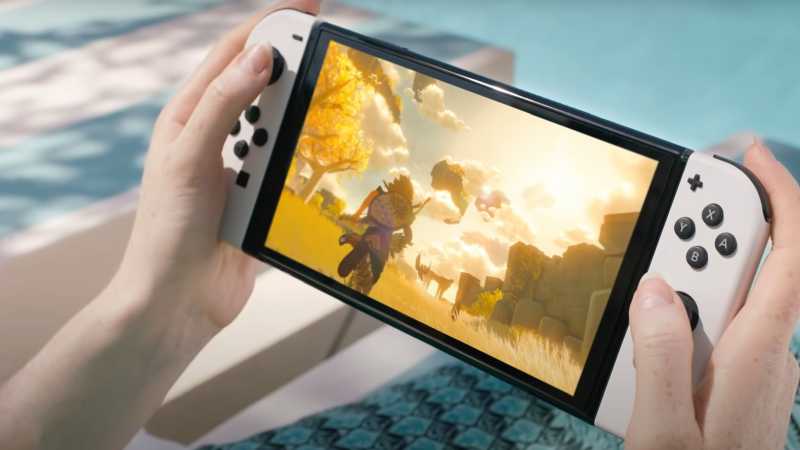
Nintendo Switch OLED isn’t any more powerful than an older Nintendo Switch, so the design changes are mostly related to things like screen quality, build quality and battery life. Switch OLED is firmly a hardware revision, and not the next-generation of Nintendo’s console hardware.
Nintendo Switch classic and Nintendo Switch OLED are around the same size, making the new OLED screen the biggest game changer for those upgrading from one to the other. Thanks to a reduction in overall bezel size, the new high-quality OLED display feels much larger, even though the tablet part of the hybrid console itself isn’t actually any bigger at all.
If you’re not a fan of the post-processed high-contrast look of the new screen, you can actually go into the System Settings and make the picture softer like the original Nintendo Switch. You’ll find the option under “System -> Console-Screen Colors” and you’ll want to change it from “Vivid” to “Standard”.
One of the big worries about Nintendo’s new OLED handheld revision is that OLED screens are so prone to pixel burn in, which leaves pixels stuck displaying images that should have long-since left them. We suggest that you leave the ‘auto brightness’ feature on to reduce the chances of that happening as much as possible, although it does dim the screen.
Nintendo Switch already had a battery revision back in 2019, and as far as we can tell the Nintendo Switch OLED continues to use the same parts. It gets around 20 minutes more battery life than the previous hardware revision thanks to a power efficient screen, which is about an hour-and-a-half more than the original Nintendo Switch or the handheld-only Nintendo Switch Lite.
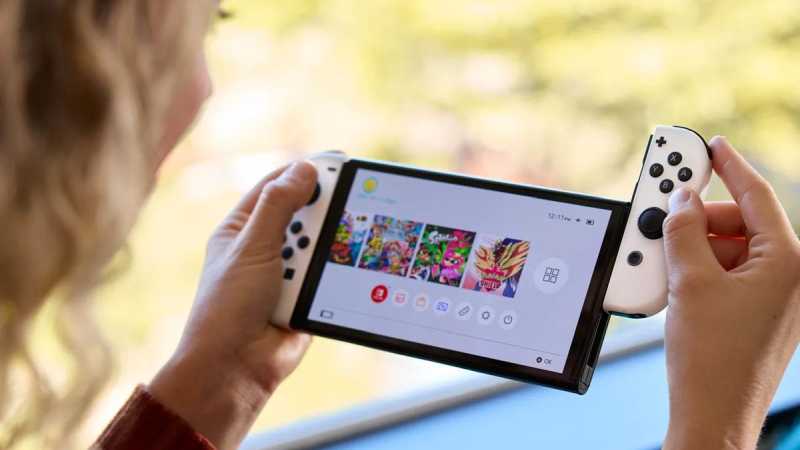
The Nintendo Switch OLED uses a new revision of the Joy-Con Controllers that the Big N is intending to use as the standard design in at least the near-future. In a recent Nintendo developer Q&A the company revealed they have actually been working to reduce drift since launch, but said that avoiding it altogether would be impossible as long as the parts had to make physical contact with each other.
Nintendo executive Ko Shiota seemed resigned to the idea that drift would never entirely go away —which is admittedly troubling— saying “…car tires wear out as the car moves, as they are in constant friction with the ground to rotate. So with that same premise, we asked ourselves how we can improve durability, and not only that, but how can both operability and durability coexist.”
In our time with the Nintendo Switch OLED, we saw no signs of Joy-Con drift at all. Only time will tell if we will encounter it going forward, but we’re hoping the latest revision is sturdier than previous ones.
Nintendo Switch OLED also arrives with the first Switch dock revision. The Nintendo Switch OLED dock includes an ethernet port by default, making it the first Nintendo machine to do so without an additional purchase. It’s functionally the same otherwise, despite it’s new look.
If you’re the owner of an older Nintendo Switch, you may want to keep your old dock and put it in another room, as docks are cross-compatible with either Nintendo Switch version for video and audio output. Neither dock is compatible with the Nintendo Switch Lite, which remains a Handheld Mode only device.
While the Nintendo Switch OLED feels similar to the 2017 Nintendo Switch, changes to some of the materials used in it’s construction do make it feel a little bit more expensive and prestigious compared to the older model.
Nintendo has used metal covered in a thin layer of matte plastic for the main chassis of the tablet part of the console, which makes the unit a little bit heavier but has the added bonus of keeping the console cool to the touch during even the most strenuous of gaming sessions.
There’s also been a revision to the built-in kick-stand used for Tabletop Mode, which is something Nintendo Switch users have been asking for for years. Instead of a thin, wobbly little leg, the new stand is as long as the entire bottom half of the tablet part of the console.
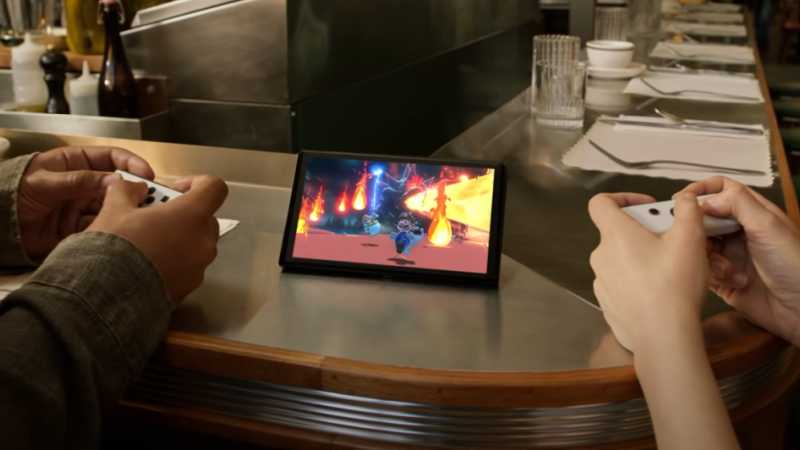
Crucially, it no longer feels like it might fall over if hit with a strong breeze. As a part of this redesign, they’ve also repositioned the MicroSD Card slot. It is now horizontal, but is still exposed if you’re propping up the console with the kick-stand, so you’ll want to make sure it isn’t loose.
The Nintendo Switch OLED screen has a glass covering instead of the plastic used on Nintendo Switch and Nintendo Switch Lite. This should protect it from accidentally picking up scratches across the viewing area. While we mentioned earlier that the bezel size has been reduced, we have to point out that it isn’t gone altogether.
There’s still a small one, which is made of strangely shiny “piano black” plastic. That sort of plastic tends to easily pick up scratches and fingerprints, so we’re not sure why you’d surround your multi-touch screen with it. We have thankfully avoided any incidents so far, but it feels like a matter of ‘when’ and not ‘if’ some damage will happen to that part of the machine.
The Nintendo Switch OLED is an improvement over the Nintendo Switch, but it’s not a generational leap by any means. It’s a high quality device that is easy to like more than the original console, but only you can decide if the incremental upgrades are worth the cost to you as an individual. We think the best console with the best software exclusives just got better, so we can very much see the appeal.
If your Switch console is looking a bit beaten up after years of travel and use, or you don’t actually have one yet, then the Switch OLED doesn’t cost too much more than other Nintendo Switch consoles. It should be the go-to purchase for new Switch players in 2021. Even if you only use it in Handheld Mode, the screen is really nice, so we’d suggest it over the Nintendo Switch Lite too unless you really don’t want to spend that much money. If you’re looking for a headset to enhance the experience, have a look at our Best Nintendo Switch headset guide for that good good audio upgrade.
